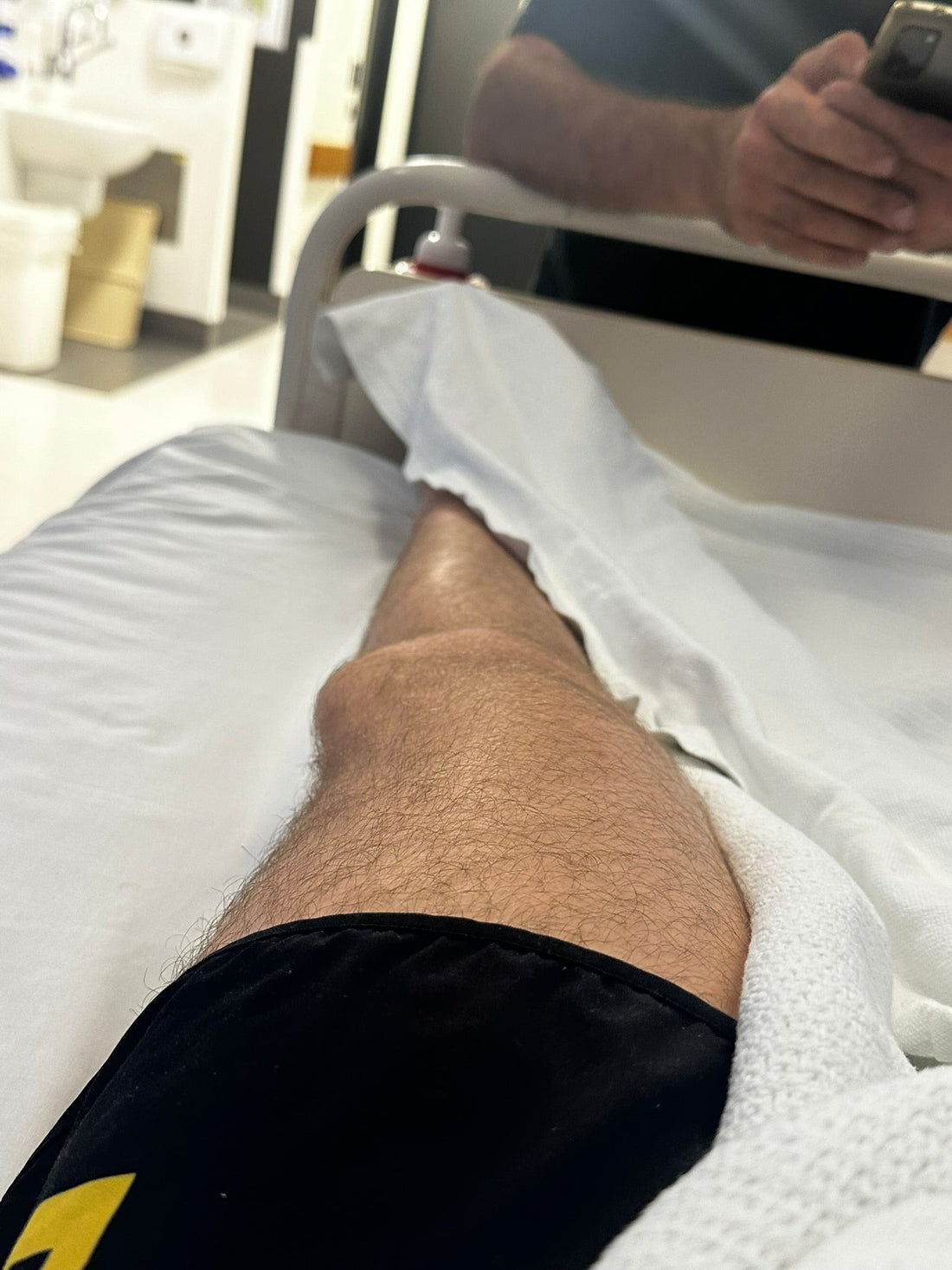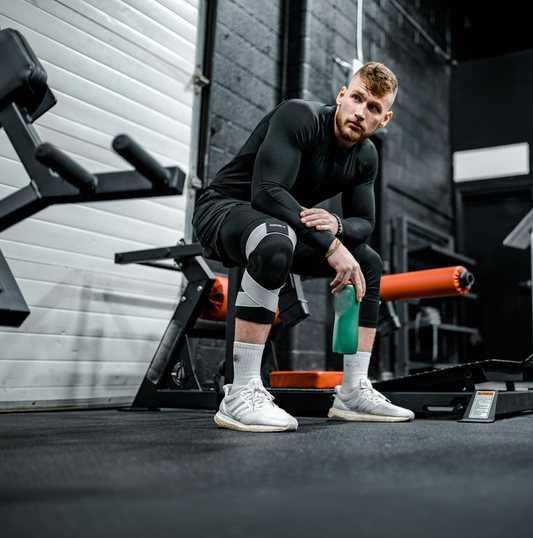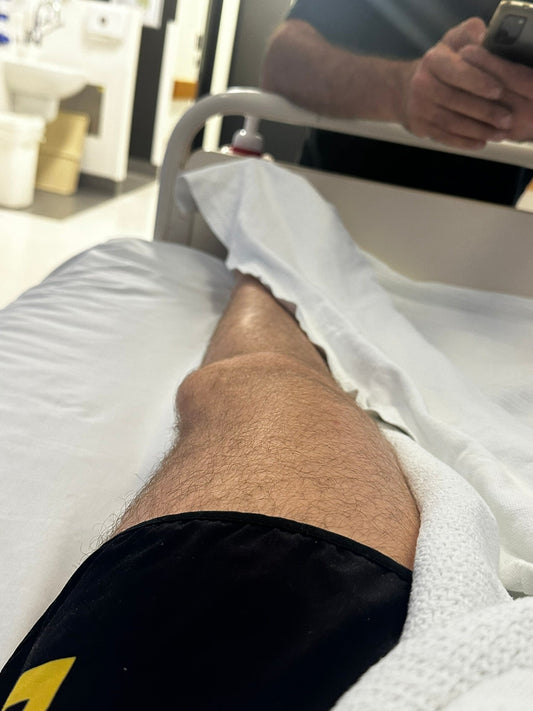
My Journey Through Two Knee Dislocations and How it Tested My Limits
Share
When I first started training Brazilian Jiu-Jitsu (BJJ), I never imagined how much it would shape my life — both mentally and physically. It became my outlet, my community, and my biggest passion. But as anyone who trains long enough knows, injuries can be part of the journey. For me, that lesson came in the form of not one, but two serious knee dislocations — each one testing my resilience, patience, and determination to get back to the mats.
Hi, I’m Josh, 24 years old, and this is my story of how I went from hospital beds and braces to rolling again with confidence — and what I learned along the way.
The First Injury: When My Knee Gave Out
It happened during a regular Jiu-Jitsu roll. I was working from the bottom position and went to post and pivot when I suddenly felt — and heard — a loud pop. The next second, my leg gave out, and I looked down to see that my kneecap (patella) had completely dislocated to the side.
The pain was instant and intense. My training partners and coach helped me off the mats, called the ambulance and was rushed to the hospital. I thought it would be a quick fix — that the doctors would just pop it back in, and I’d be fine. But it didn’t go that way.
After multiple failed attempts to relocate the patella, the doctors required me to stay overnight with the patella still dislocated until the osteopath came in, in the morning they decided to put me under anaesthesia. It was only then that they managed to get it back into place without pain. When I woke up, my leg was stiff, swollen, and throbbing. I was fitted with a straight knee brace and told I’d need to wear it for several weeks while the ligaments healed.
For the first couple of weeks, I could barely bend my leg. Walking required crutches, and everyday tasks like showering, sleeping, and even sitting were a struggle. Mentally, it was one of the toughest experiences I’ve ever had — going from training five days a week to barely being able to move.

The Rehab Journey: Relearning How to Move
Once the initial pain and swelling went down, I started physiotherapy. My physio explained that I’d need to retrain my muscles and rebuild joint stability from the ground up. The injury had weakened my quadriceps, hamstrings, and glutes, and even my proprioception (my body’s sense of balance and position) was off.
Here’s what my rehab looked like over the weeks and months:
Phase 1: Mobility and Activation
- Gentle heel slides and quad sets to slowly restore movement and muscle engagement
- Isometric contractions to get my quads firing again without stressing the joint
- Electrical stimulation therapy (e-stim) to help wake up atrophied muscles
- Regular ice therapy and compression to manage swelling
Phase 2: Strength and Stability
- Progressed into closed-chain exercises like wall sits, mini-squats, and step-ups
- Added glute bridges, clamshells, and resistance band work to strengthen hip stability
- Introduced balance drills — standing on one leg, using a wobble board, and extra balance exercises
- Continued stationary cycling and swimming to improve circulation and endurance
Phase 3: Return to Movement
- Gradually started light jogging, agility ladder drills, and controlled direction changes
- Focused heavily on single-leg strength and eccentric control (slow lowering movements)
- Began sport-specific movements like sprawls and technical stand-ups under physio supervision
This process took months, but I stuck with it. I learned to celebrate small wins — being able to bend my leg again, walking without a brace, and finally regaining confidence to move naturally.
After what felt like forever, I was cleared to return to Jiu-Jitsu after three months. The first session back was amazing — just stepping on the mats again felt like a victory.
The Second Injury: Different Knee, Same Battle
Almost a year later, I went on a snow trip with some friends. It was my first time snowboarding since my recovery, and I felt strong, confident, and ready. But during one of the runs, I caught an edge while turning and landed awkwardly, instantly feeling that same horrifying pop — except this time, it was my other knee.
I knew right away what had happened. My other patella had dislocated. I was in shock. I sat in the snow, clutching my leg, and all I could think was, “Not again.”
Once again, it was back to the hospital, back to the brace, and back to square one. This time, though, I knew what to expect — and that made all the difference. I stayed consistent with my rehab, did every exercise my physio prescribed, and paid extra attention to strengthening both knees equally.

Where I Am Now: Training Smarter and Staying Protected
Now, I’m back to doing what I love — training Jiu-Jitsu regularly. But I’ve made a lot of changes to how I train and take care of my body. I always wear KOVA + knee braces and take extra care during training sessions, especially for drilling and sparring. I also spend more time warming up properly — focusing on mobility, activation, and stability before every class.
Off the mats, I make sure to hit the gym 2–3 times a week for strength and conditioning, focusing on lower-body stability, hip control, and core strength. I’ve also added yoga and mobility work into my weekly routine to stay flexible and balanced.
Most importantly, I’ve learned to listen to my body. If something feels off, I rest, recover, and reassess. I’m no longer afraid to take time off when I need it — because pushing through pain only leads to longer setbacks.
What I’ve Learned
These two injuries taught me that recovery isn’t linear. Some days, progress is obvious — other days, it feels like you’re going backwards. But every bit of consistency adds up.
If you’re recovering from a knee dislocation, my advice is simple:
- Be patient. Rushing back too early will only hurt you more.
- Stay consistent. Do your rehab exercises, even when you don’t feel like it.
- Train smarter. Focus on technique, positioning, and joint safety — not ego.
- Protect your knees. Good supports and proper warm-ups make a massive difference.
Today, I’m stronger, smarter, and more mindful on the mats. These injuries didn’t stop me — they just changed how I train and how I take care of myself.


